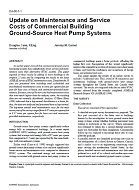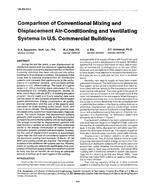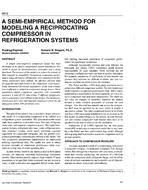The removal of field heat from fruits and vegetables prior to transportation and marketing has long been recognized as effective in retarding ripening and in controlling microbial processes.1•2 The term IIprecoolingll is commonly used for description of this rapid cooling operation. 1,3,4 Maxie et al. 5 described the biological basis for prompt cooling. listing a series of physiological, biochemical, pathological and physical changes that are temperature dependent in fruits. Precooling is likely the most important of all the operations used in the maintenance of desirable, fresh, and salable produce.
According to Guillou,6 the rates of various changes, such as moisture loss and the action of enzymes and micro-organisms, are commonly doubled or tripled with each 10 deg F (6.deg C) rise in temperatur.e. He estimated that some fresh fruits and vegetables deteriorate as much in an hour at 90 F (32°C) as in a day at 50 F (10°C) or in a week at 32 F (O°C). Considerable research7,8 has been done relating to losses during the marketing of fresh fruits and vegetables. Total losses caused by decay and shriveling at the wholesale, retail, and consumer levels were reported to be in the range of 5 to 10% for many products and as high as 15% for some. In addition. those products that do reach the consumer are generally of a lower overall quality than at the time of harvest. Improved cooling of fruits and vegetables before shipment, along with proper temperature maintenance throughout the marketing channels, has the potential of greatly reducing the losses mentioned above.
The fresh fruit and vegetable industry has practiced some form of precooling for many years. For example, hydrocooling has been used in Florida since 1923 when it developed as an outgrowth of celery washing. 9 Many of the cooling systems presently in use were designed without regard to engineering principles. and of increasing concern, without regard to principles of energy conservation. Many changes are occurring in the fresh fruit and vegetable industry, providing the opportunity for adoption of improved cooling systems. However, a prerequisite to the design and operation of efficient cooling systems is a basic understanding of the heat transfer that takes place during a particular cooling operation.
Presently, no straightforward, systematic method seems to exist for analysis of the rate of heat transfer and temperature distribution within a bulk load of fruits or vegetables. Afew methods are available, such as the graphical solutions of Schumann10 and Furnas,ll but these solutions give acceptable results for only a few practical applications.
Citation: Symposium, ASHRAE Transactions, Volume 82, Part 2, Seattle, WA
Product Details
- Published:
- 1976
- Number of Pages:
- 16
- File Size:
- 1 file , 950 KB
- Product Code(s):
- D-SE-76-04-1


